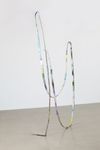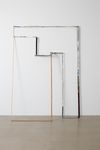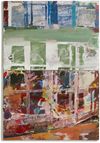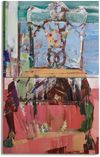Christian Andersen, Frederiksholms Kanal 28A, 1220 Copenhagen K, +45 2537 4101, info@christianandersen.net
Images
Press release
”The loom of the night lifted a little, and he could see the outline of some great building a few yards away. Beyond this were other shadows, faint as the visions in a dream - the shadows of yet more temples and lines of houses, the wind, blowing among them, brought back a rustle of tossing hedges… Then, without warning or presage, the red dawn shot up behind him, and there leaped out of the night the city of dead. Tall-built, sharp-domed palaces flushing to the colour of blood, revealed the horror of their emptiness, and glared at the day that pierced them through and through. The wind passed singing down the empty streets… A screen of fretted marble lay on the dry grass, where it had fallen from some window above, and a gecko crawled over it to sun himself…”
Rudyard Kipling, from the novel The Naulahka
The Dutch neurobiologist Bernard Baars compares the human consciousness to that of a theatre stage. Moving in the spotlight are those mental states that we for the time being are able to reflect upon and challenge rationally. Working backstage are those vague states that we are not focusing on and the audience consists of the various reactions that the performance on stage may evoke within our body. There are also parts of the stage floor where the light beam never reaches - this is where our unconscious thoughts move. Undefined states that have a direct influence on the dialogue performed in the light. In this way every conscious thought and act is followed by a chain of thoughts and mental states that we are never fully
aware of.
The ruin's ability to generate various narratives has been utilized heavily in literature and throughout art history but seems in truth to touch more on notions of a condition rather than a cultural phenomenon. A condition marked by instability on the border of disintegration and figuration, in which the divide between exterior and interior slowly crumbles in unison with the collapse of the building’s structure and as sediments of paint and tapestry are exposed and falls down over the furniture. Furniture that with time is weaved into the outside vegetation. A composition of deterioration where layers of what used to be external surfaces now make up new structures and old structures finally disappear into thin lines. A suggestive state where new openings are created, not only physically but also in thought. In this disbanded landscape we are confronted with our weakness for filling out empty space, in memories, in images, and in stories - to create an understanding of the world. The fragmentation of form highlights the constant presence of interpretation and the web of thoughts, emotions, and hopes that seem to spill out over it. Perhaps it is only in a state of dissolution where sight and thought flicker that we begin to distinguish contours of the figures moving silently across the stage floor.
Text by Olga Nowotny, June 2011







